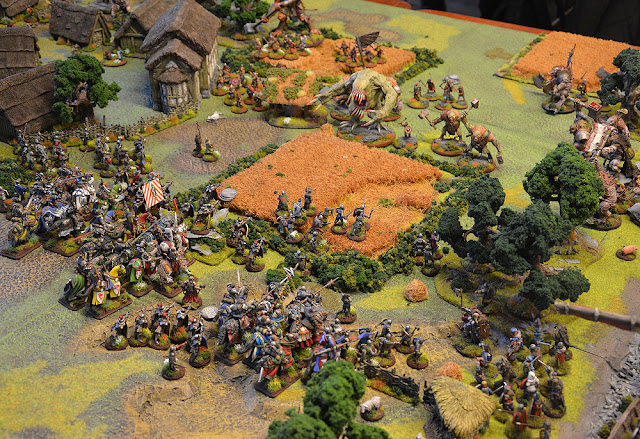Some shots of Tho's ferocious Hunnic horde:
Who were the Huns?
The earliest systematic description of the Huns is that given by the historian Ammianus Marcellinus, writing c. 395. They were apparently primitive pastoralists who knew nothing of agriculture. They had no settled homes and no kings; each group was led by primates, as Ammianus called them. Whether or not they had a single overall leader in the 4th century is still a matter of dispute.
As warriors the Huns inspired almost unparalleled fear throughout Europe. They were amazingly accurate mounted archers, and their complete command of horsemanship, their ferocious charges and unpredictable retreats, and the speed of their strategical movements brought them overwhelming victories.
For half a century after the overthrow of the Visigoths, the Huns extended their power over many of the Germanic peoples of central Europe and fought for the Romans. By 432 the leadership of the various groups of Huns had been centralized under a single king, Rua, or Rugila. When Rua died in 434 he was succeeded by his two nephews, Bleda and Attila. The joint rulers negotiated a peace treaty at Margus (Pozarevac) with the Eastern Roman Empire, by which the Romans agreed to double the subsidies they had been paying the Huns. The Romans apparently did not pay the sums stipulated in the treaty, and in 441 Attila launched a heavy assault on the Roman Danubian frontier, advancing almost to Constantinople.
About 445 Attila murdered his brother Bleda and in 447, for unknown reasons, made his second great attack on the Eastern Roman Empire. He devastated the Balkans and drove south into Greece as far as Thermopylae.
Since Ammianus’ time the Huns had acquired huge sums of gold as a result of their treaties with the Romans as well as by way of plunder and by selling their prisoners back to the Romans. This influx of wealth altered the character of their society. The military leadership became hereditary in Attila’s family, and Attila himself had autocratic powers in peace and war alike. He administered his huge empire by means of “picked men” (logades), whose main function was the government of and the collection of food and tribute from the subject peoples who had been assigned to them by Attila.
In 451 Attila invaded Gaul but was defeated by Roman and Visigothic forces at the Battle of the Catalaunian Plains, or, according to some authorities, of Maurica. This was Attila’s first and only defeat. In 452 the Huns invaded Italy and sacked several cities, but famine and pestilence compelled them to leave. In 453 Attila died; his many sons divided up his empire and at once began quarreling among themselves. They then began a series of costly struggles with their subjects, who had revolted, and were finally routed in 455 by a combination of Gepidae, Ostrogoths, Heruli, and others in a great battle on the unidentified river Nedao in Pannonia. The Eastern Roman government thereupon closed the frontier to the Huns, who ceased to play any significant part in history, gradually disintegrating as a social and political unit.
Source: https://www.britannica.com/topic/Hun-people
























